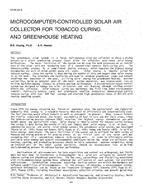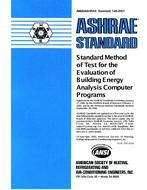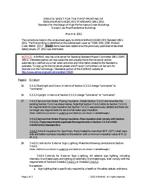This paper explores the improvement on traditional insulated concrete form construction by embedding pipes for heating and cooling into poured concrete walls and floor. Buildings constructed with these thermally active walls are able to take advantage of thermal energy storage, solar thermal collection, as well as lower condensing temperatures for a heat pump that would be used to heat the space. Computational simulations of thermally active walls have been performed to demonstrate the potential for energy savings of the proposed construction technique and have been used to determine the equipment size and piping layouts needed for such a system. These simulations show a significant potential for energy reduction of the building, but the components of the thermally active wall system must be properly sized depending on the particulars of the construction. This gives rise to a need for a scalable and dynamic thermal optimization model that could be used immediately prior to the construction phase of a building to properly size the systems.
This paper describes the concept of the thermally active wall construction and the results from various computational models that have been used to provide results of thermal storage, efficiency, and other improvements. In addition, it describes initial efforts towards development of a full building model that will be able to provide customization of system size for various plans and footprints. This model will include the thermal mass of the furniture and air in the room and take into account the transients throughout the day and night including active solar collection and passive solar gains, indoor humidity effects, thermal storage tanks, as well as geographical locations and orientation of the construction. Some of the initial efforts that went into the development of this model were performed by students as part of an elective course and served to demonstrate the material covered in the class.
A prototype building is currently being planned, and comparisons with actual data are intended to be used for refinements of the computational models. Hopefully, these data will be available in time for the winter meeting.
Citation: 2020 Winter Conference, Orlando, FL Conference Papers
Product Details
- Published:
- 2020
- Number of Pages:
- 8
- Units of Measure:
- Dual
- File Size:
- 1 file , 820 KB
- Product Code(s):
- D-OR-20-C014


